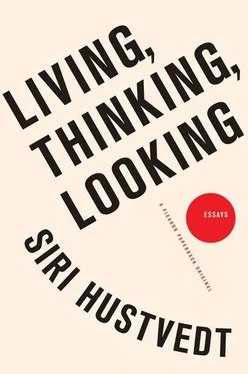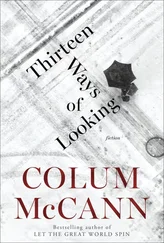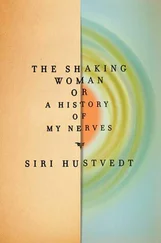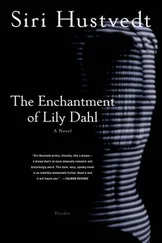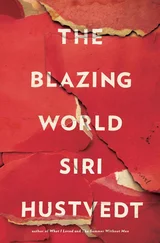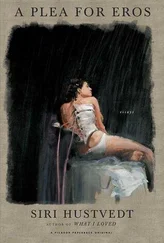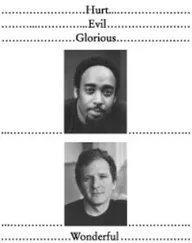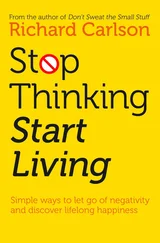We are all prisoners of our mortal minds and bodies, vulnerable to various kinds of perceptual transfigurations. At the same time, as embodied beings we live in a world that we explore, absorb, and remember — partially, of course. We can only find the out there through the in here . And yet, what the philosopher Karl Popper called World 3, the knowledge we have inherited — the science, the philosophy, and the art — stored in our libraries and museums, the words, images, and music produced by people now dead, becomes part of us and may take on profound significance in our everyday lives. Our thinking, feeling minds are made not only by our genes but also through our language and culture. I have been fond of Lewis Carroll’s Alice since childhood. She may have started out as words on a page, but now she inhabits my inner life. (One could also say her story has been consolidated in my memory through important work done by my hippocampus.) It is possible that my headache episodes have made me particularly sympathetic to the girl’s adventures and her metaphysical riddle, but I am hardly alone in my affection. I dare say countless people have lifted her from World 3, a kind of Wonderland in itself, and taken her into their own internal landscapes, where she continues to grow and shrink and muse over who in the world she is.
3. LIFTING, LIGHTS, AND LITTLE PEOPLE
Not every migraine has a prologue or “aura,” and not every aura is followed by a headache. Nevertheless, these overtures to pain or isolated events are the most peculiar aspect of the illness and may offer insights into the nature of perception itself. As a child I had what I called “lifting feelings.” Every once in a while, I had a powerful internal sensation of being pulled upward, as if my head were rising, even though I knew my feet hadn’t left the ground. This lift was accompanied by what can only be called awe — a feeling of transcendence. I variously interpreted these elevations as divine (God was calling) or as an amazed connection to things in the world. Everything appeared strange and wondrous. The lights came later in my life — showers of stars that begin on one side, usually the right, sharp black points surrounded by shining light that cascade downward and then move toward the center of my vision, or brilliant lights surrounded by black rings or just tiny black spots swimming in air. I’ve had fogs and gray spots that make it hard to see what’s in front of me, weird holes in my vision, and a sensation that there’s a heavy cloud in my head. I’ve had feelings of euphoria that are indescribably wonderful and supernatural exhaustion — a weariness unlike any other I’ve experienced, a pull toward sleep that is irresistible. Sometimes I have fits of yawning that I can’t stop. Also, often just before I wake up with a migraine, I have an aphasia dream. I am trying to speak, but my lips won’t form the words and every utterance is terribly distorted. But my most remarkable premigraine event was hallucinatory. I was lying in bed reading a book by Italo Svevo, and for some reason looked down, and there they were: a small pink man and his pink ox, perhaps six or seven inches high. They were perfectly made creatures and, except for their color, they looked very real . They didn’t speak to me, but they walked around, and I watched them with fascination and a kind of amiable tenderness. They stayed for some minutes and then disappeared. I have often wished they would return, but they never have.
Lilliputian hallucinations before migraine are rare. There are other documented cases, however. Klaus Podoll has written about a woman who during her migraine attacks sees amusing little beetles with faces run across her floor and ceiling. Another reported case involved tiny Indians, and yet another, a dwarf. It wasn’t until after my duo had vanished that I understood I had seen a miniature version of two legendary, oversized characters from my childhood in Minnesota: Paul Bunyan and his blue ox, Babe. The giant man and his huge animal that I had read about in stories had shrunk dramatically and turned pink. It was then that I asked myself about the content of the hallucination. What did it mean that my aura took that form, rather than something else? Are these visions purely nonsensical? What memory traces are activated during these experiences? A man I met in the hospital, where I teach a writing class to psychiatric inpatients, told me that during a psychotic episode he had hallucinated little green men getting into a spaceship. This stereotypical vision of Martians appeared during his crisis, but unlike most of the migraineurs I’ve read about, he found his little aliens disturbing. Psychosis, alcoholism, dementia, epilepsy, and hallucinogens like LSD can all produce neurological disturbances that conjure tiny, life-size, or gigantic persons and animals, as can a disorder called Charles Bonnet syndrome, often but not always associated with deteriorating vision. In his book Phantoms in the Brain, V. S. Ramachandran reports that during a conversation he had with one of his patients, she told him that she saw little cartoon characters scooting up his arms. Why Paul Bunyan? Why Martians? Why cartoon characters? Oddly, all of these visions have a folkloric quality, more contemporary versions of the mythological little people around the world: leprechauns, brownies, fairies, gnomes, goblins, Nordic nisse and tomten, the Hawaiian Menehune , the Greek kalikauzari , the Cherokee yumwi . Where did all these wee folk come from? The content of hallucinations must surely be at once personal and cultural.
My dear little creatures were migrainous figments, aura products similar to other experiences of complex visual hallucinations, which although they may have various medical causes, bear a resemblance to one another and no doubt have some neurobiological connection. As Oliver Sacks points out in his book on migraine, we all hallucinate in our sleep. We generate dream images and stories that are often peculiar, violate the laws of physics, and are highly emotional. But why we dream remains a scientific mystery. Sigmund Freud proposed that dreams protect sleep. Mark Solms, a neurologist and sleep researcher, agrees: “Patients who lose the ability to dream due to brain damage suffer from sleep-maintenance insomnia — they have difficulty staying asleep.” 4We human beings may have a need to create stimulating imagery that keeps us busy while we’re in that parallel state and the waking world has vanished.
Another ordinary form of spontaneous mental images are hypnagogic hallucinations, which appear on the threshold between sleeping and waking. I had always believed that the brilliant mutating images I see as I drift off every night are universal, but I have since discovered that while common, not everyone falls asleep to visions. I am deeply attached to my presleep cinema of ghouls and monsters, shifting faces and bodies that grow and shrink, to my own nameless cartoon characters who flee over mountaintops or jump into lakes, to the brilliant colors that explode or bleed into gorgeous geometries, to the gyrating dancers and erotic performers who entertain me while I am still conscious but falling toward Morpheus. Except as a spectator, I play no role in this lunatic borderland. It is a world distinct from that of my dreams, in which I am always an actor, and therefore it is more closely allied to my Lilliputian experience. I watched them, but I felt no need to interact with them. They were simply there for my viewing pleasure.
It is comforting to think that visual perception is a matter of taking in what’s out there, that a clear line exists between “seeing things” and the everyday experience of looking. In fact, this is not how normal vision works. Our minds are not passive containers of external reality or experience. Evidence suggests that what we see is a combination of sensory information coming in from the outside, which has been dynamically translated or decoded in our brains through both our expectations of what it is we are looking at and our human ability to create coherent images. We don’t just digest the world; we make it. For example, we all have a blind spot in each eye at the place where the optic nerve enters the retina, but we don’t sense that hole, because our minds automatically fill it in. As V. S. Ramachandran and the philosopher Patricia Churchland have argued, “filling in” isn’t always the covering over of a blank with more of the same; there are instances when the brain provides pictures — a normal form of hallucination. Very simply, for the mind, absence can be a catalyst for presence. In his beautiful memoir, And There Was Light, Jacques Lusseyran describes his experience of the world after he went blind at age eight: “Light threw its color on things and on people. My father and mother, the people I met or ran into in the street, all had their characteristic color which I had never seen before I went blind. Yet now this special attribute impressed itself on me as part of them as definitely as any impression created by a face.” 5For Lusseyran, losing his vision became an avenue to almost mystical insight. He found himself lifted up into a world of color and light drenched with meaning.
Читать дальше
